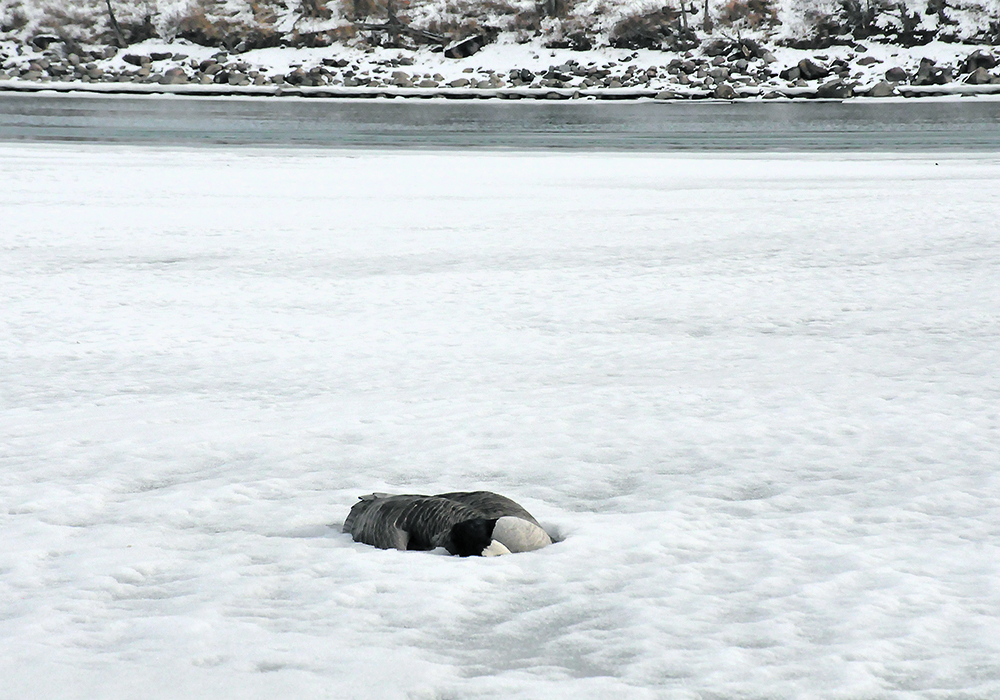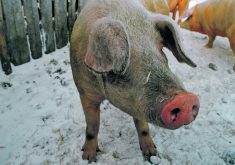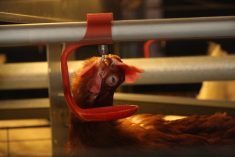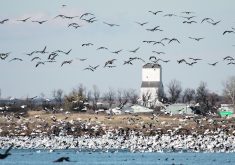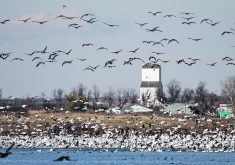Deaths among birds that spend the winter on the Prairies cause concern for poultry producers as spring migration looms
Resident populations of migratory waterfowl are turning up dead from suspected cases of avian influenza in southern Alberta this winter along with predatory birds and scavenging land mammals.
The situation bodes poorly for poultry producers who are preparing for the spring migration of wild birds. Last year, the migration brought in a slew of infections at commercial operations across the country, starting in late March.
Suspected and confirmed cases have been found in Calgary, Lethbridge and Medicine Hat in recent months along open water areas on the Bow, Oldman and South Saskatchewan rivers.
Read Also

Manitoba community projects get support from HyLife
HyLife Fun Days 2025 donated $35,000 each to recreation and housing projects in Killarney, Steinach and Neepawa earlier this fall.
According to Melanie Whalen, director of wildlife care at the Calgary Wildlife Rehabilitation Society, the centre is also seeing more cases in scavenging mammals.
“We’re still getting animals in. Not just waterfowl but magpies. We’ve had a series over the past month of a bunch of skunks that have been coming in,” said Whalen. “We’ve already identified fox and skunk and a few mammals in the province that have gotten HPI (highly pathogenic influenza) as well, and we suspect — we haven’t gotten the tests back — that’s what we’re seeing in these skunks.”
The common theory for land mammals infected with avian influenza is that the virus is terminal in the host and is not spread between scavenging species.
Whalen said there isn’t any hard data to say otherwise.
But she warns pet owners to be careful where their dogs and cats might go if they may cross paths with infected birds.
In the United States, the list of bird-flu-infected land mammals is growing.
According to the U.S. Department of Agriculture, bears, bobcats, coyotes, foxes, raccoons, seals and a bottlenose dolphin were found to be infected with bird flu during their latest species case count in February.
Alicia Lew, chief interpreter at Police Point Park in Medicine Hat, said avian influenza is common in birds and rarely causes deaths at the scale seen last year.
What’s uncommon about the latest strain of the virus is how easily it’s being spread and the number of birds it’s killing.
Lew said her interpretive centre has received multiple reports from the public regarding mostly dead Canada geese but also mallards and a few great horned owls as well.
“That’s pretty much widespread through the entire Oldman-South Saskatchewan River watershed,” said Lew.
She added no avian influenza cases in land mammals have been reported in the Medicine Hat region.
However, with the spring migration, waterfowl will congregate near water bodies where the threat of infection between birds is elevated.
Nearly 300 farmed flocks across Canada have been found with infected birds, which has resulted in 7.1 million commercial poultry being destroyed since the first case of the highly pathogenic strain of bird flu was found in Canada in December 2021.
About half those culled birds resulted from infections at poultry farms in B.C.’s Fraser Valley. Most cases were detected from mid-November to late-January.
The large resident migratory bird population in the region is the prime suspect in those cases.


